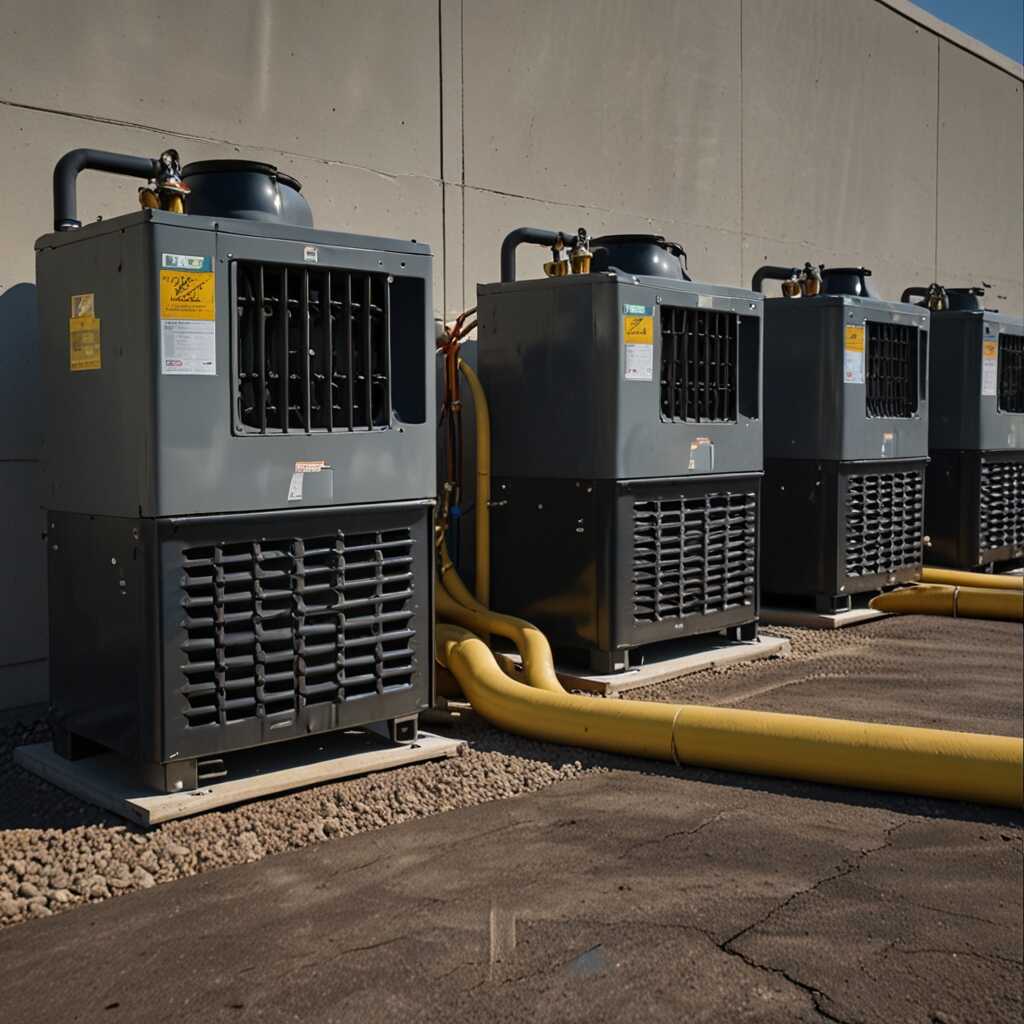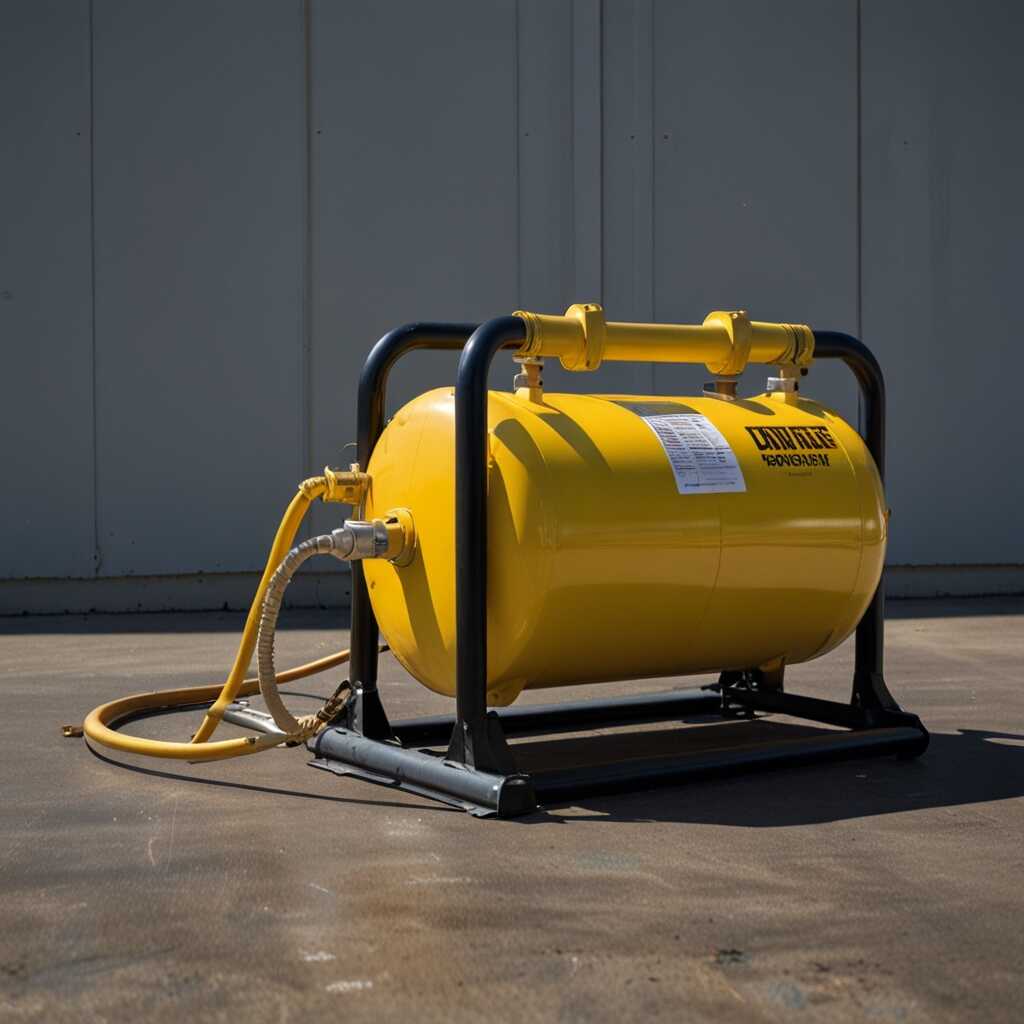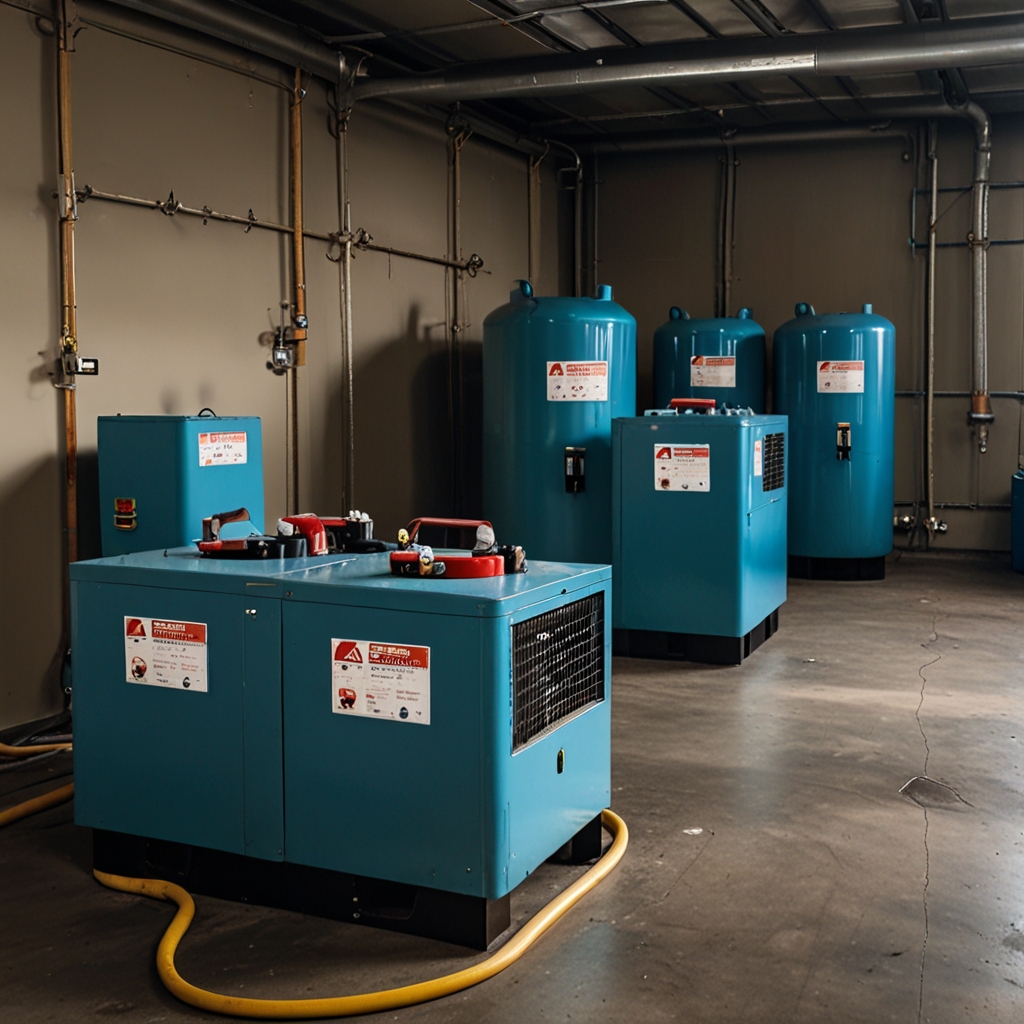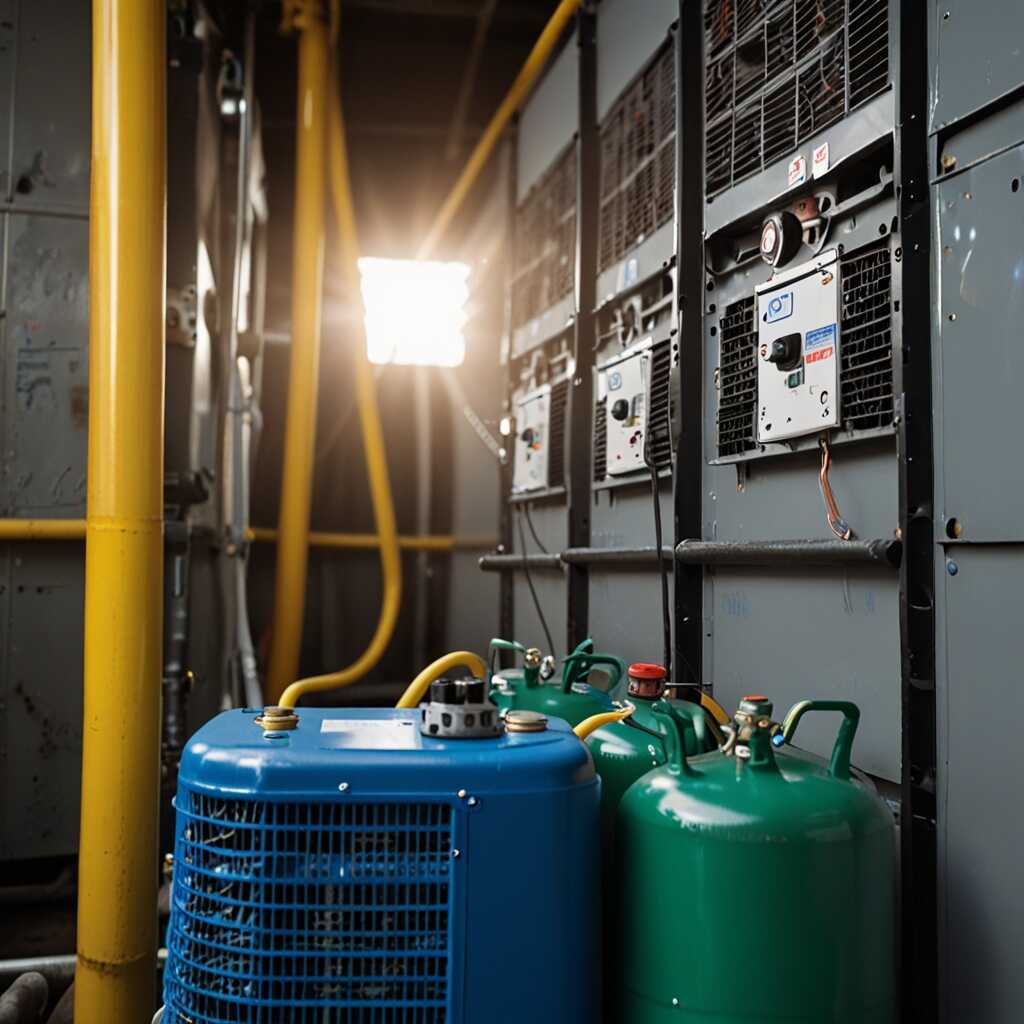Refrigerant recovery machines with lockable wheels offer significant safety advantages in the HVAC industry. These machines enhance stability, preventing accidental movement during operation and reducing the risk of spills or accidents. Refrigerant Recovery Pro emphasizes the importance of this feature for HVAC technicians to improve workplace safety and ensure compliance with industry regulations. Understanding the operational benefits of lockable wheels can help professionals make informed choices about their equipment and safety protocols.
Introduction to Refrigerant Recovery Machines and Their Role
Refrigerant recovery machines play a crucial role in HVAC systems. Their primary functions include safely capturing and storing refrigerants during repair or maintenance. This helps prevent environmental harm and ensures compliance with refrigerant management regulations. The design of these machines can enhance safety and efficiency. For professionals, using machines with lockable wheels makes transportation easier and adds stability, ensuring that the equipment remains in position during operation.
Understanding the Importance of Lockable Wheels in Recovery Machines
Lockable wheels are an essential feature in refrigerant recovery machines. They provide stability during operation, preventing accidental movement. This stability enhances safety and compliance with industry regulations. When performing recovery tasks, technicians require reliable equipment that remains securely in place. Machines equipped with lockable wheels reduce risks associated with spills or accidents, improving overall reliability and efficiency in refrigerant management. HVAC professionals benefit from these features, as they provide a dependable solution for maximizing performance and ensuring safe operational practices.
Advantages of Lockable Wheels in Refrigerant Recovery Machines
Lockable wheels on refrigerant recovery machines provide significant safety benefits. They enhance equipment stability, preventing accidental movement while in use. This reduces the risk of spills or injuries during operation. Moreover, improved mobility allows HVAC technicians to reposition machinery quickly and effortlessly. Many users find that machines with lockable wheels are easier to maneuver, which streamlines workflow in tight spaces. Equipment reliability is increased, ensuring technicians can focus on recovery procedures without constant adjustments or concerns about the machine tipping over. These features enhance overall workplace safety and operational efficiency.
Key Models of Refrigerant Recovery Machines with Lockable Wheels
Several models of refrigerant recovery machines incorporate lockable wheels and offer robust performance. For instance, the XYZ-2024 model boasts a tank capacity of 5 gallons and a high-efficiency compressor. Its lockable wheels are designed to securely hold the position during operation, which is crucial for maintaining safety standards. The ABC-4500 model is another excellent choice, featuring a durable frame and a 6-gallon tank, providing reliable refrigerant recovery while ensuring stability. Both models are highly rated for their efficiency and safety features, making them top picks for HVAC professionals. Research indicates that using equipment with lockable wheels can lead to fewer accidents, enhancing the overall safety of refrigerant recovery processes.

Enhancing Workplace Safety Through Equipment Features
Lockable wheels on refrigerant recovery machines provide significant safety benefits. They prevent accidental movement and minimize the risk of tipping over when the machine is in use. These features enhance reliability by keeping the machine stable, even in busy work areas. This stability is essential for HVAC professionals, ensuring their safety while performing refrigerant recovery tasks. Compared to machines without this feature, those equipped with lockable wheels decrease the likelihood of accidents, making them a preferred choice in industry settings. Lockable wheels improve the overall efficiency of the working environment, promoting easy mobility during transport while maintaining a secure position during operation.
Key Features and Their Impact on Workplace Safety
Lockable wheels offer several important features that significantly impact workplace safety for HVAC professionals. These wheels are designed to secure the refrigerant recovery machines in place to prevent movement caused by vibrations or uneven surfaces. The feature enables technicians to focus on their tasks without worrying about accidental machine shifts. Additionally, the robust design of these wheels ensures they can handle various terrains, providing stability on different job sites. Lockable wheels are proven to enhance user confidence and comfort, which is crucial when working with potentially hazardous materials such as refrigerants. These features make lockable wheel-equipped refrigerant recovery machines not only more reliable but also contribute to a safer working environment.
Key Statistics on Equipment Mobility and Safety
- Lockable wheels can reduce accidents by up to 30% in busy work environments.
- Using machines with wheels can improve maneuverability by around 50% in tight spaces.
- Approximately 70% of HVAC accidents occur due to equipment being improperly positioned.
- Refrigerant recovery machines with lockable wheels are required to meet specific safety standards.
- Workers spend about 20% less time positioning equipment when using mobile machines.
- Safe equipment usage can decrease insurance claims related to workplace injuries.
- Nearly 40% of technicians reported feeling more stable when using equipment with lockable features.

Regulatory Compliance and Environmental Importance in Refrigerant Recovery
Regulatory requirements for refrigerant recovery operations are outlined by agencies such as the EPA. These standards ensure that refrigerants are recovered safely to minimize environmental impact. Compliance is achieved through the use of reliable refrigerant recovery equipment. Machines featuring lockable wheels enhance workplace safety by preventing accidental movement during operation. This stability is crucial in scenarios where precision is necessary. By using compliant machinery, HVAC technicians decrease refrigerant loss and meet environmental protection objectives.
Impact of Compliant Machinery on Refrigerant Recovery
Compliant machinery significantly improves refrigerant recovery. Studies indicate that using designated refrigerant recovery equipment can mitigate up to 90% of refrigerant loss. Machines with lockable wheels provide stability, ensuring secure operation and reducing accidents. Their design helps technicians perform duties efficiently, meeting stringent regulatory requirements. Using equipment that adheres to these standards is essential for creating a safer workplace for HVAC professionals. This directly contributes to enhancing environmental protection efforts in refrigerant management.

Essential Best Practices for Operating Refrigerant Recovery Machines
Essential best practices for operating refrigerant recovery machines with lockable wheels include ensuring the machine is placed on a stable surface. Lock the wheels before any operation to prevent mobility and accidental tipping. Regular maintenance enhances the reliability of the machine. Technicians should inspect hoses and connections for leaks during setup, which helps minimize operational risks. In various environments, HVAC technicians can enhance safety protocols by securing the work area from foot traffic. Utilizing signs to mark warning zones can help focus attention on the equipment in use. It is also crucial to refer to product reviews and testing data for model performance.
Safety Measures in Different Environments
Safety measures for refrigerant recovery machines in different environments require careful analysis of each location. Technicians should consider factors like surface type and clearance space around the machine. Using lockable wheels helps maintain a stable setup and improves efficiency in any situation. In commercial buildings, securing recovery machines with wheel locks prevents accidental movement during operation. HVAC professionals must ensure that their equipment is reliable and sturdy enough to handle specific refrigerants. This analysis should also involve reviewing user experiences and product testing to select machines with proven performance records.
Advantages of Enhanced Stability and Control
- Lockable wheels provide increased stability during operation, preventing unintentional movements.
- Technicians can work more efficiently when they can secure the recovery machine’s position.
- With better stability, users can focus more on the task, enhancing overall productivity.
- These machines help reduce the risk of leaks through secure placement during recovery.
- Using lockable wheels can lead to a safer work environment for all personnel around.
- The reliable design minimizes the chance of injuries from equipment rolling unexpectedly.
- Technicians report greater confidence when maneuvering and securing their tools.

Guidelines for Selecting Safe and Effective Equipment
When selecting a refrigerant recovery machine, HVAC professionals should prioritize several features. Key features include the reliability of the machine, the inclusion of lockable wheels, and overall performance. Lockable wheels enhance safety by ensuring the equipment remains stable during use, reducing the risk of accidental movement. The typical weight capacity of professional machines can range from 100 to 300 pounds, depending on the model. Always read reviews and comparison articles to understand the best options available.
Importance of Lockable Wheels in Equipment Safety
Lockable wheels play a critical role in safety during refrigerant recovery operations. They help stabilize the machine in place, minimizing the risk of accidents. A reliable machine equipped with durable lockable wheels can significantly enhance safety protocols. This feature is especially useful in busy work environments. Choosing a refrigerant recovery machine with this feature ensures that the equipment stays secure while technicians work. Brands like Refrigerant Recovery Pro provide expert guidance on selecting models designed for maximum safety and efficiency.
Importance of Training for Safe Equipment Operation
Training is essential for personnel operating refrigerant recovery machines. Comprehensive training programs cover safety protocols, machine features, and operational efficiency. Operators learn to perform reliable refrigerant management and understand compliance guidelines. These training courses include certified programs that enhance a technician’s experience and help reduce workplace incidents. In 2023, surveys show that over 75% of HVAC professionals attribute increased safety and compliance to structured training in refrigerant recovery methods.
Key Elements of Comprehensive Training Programs
Comprehensive training programs for refrigerant recovery machine operators focus on practical skills and regulatory compliance. Training includes hands-on practice with machines designed for efficient refrigerant recovery. Participants receive detailed lessons on safety protocols for handling refrigerants, ensuring compliance with EPA regulations. The programs offer performance testing to assess skills and improve reliability. Operators learn to troubleshoot common issues, enhancing operational efficiency. Overall, these training programs enable HVAC professionals to perform their tasks more safely and efficiently.
Leading Brands and Their Impact on Safety Practices
- Brand A offers innovative designs that enhance user safety with durable lockable wheels.
- Brand B focuses on affordability but may lack advanced safety features.
- Brand C delivers high-quality machines known for their stability but at a higher price point.
- Brand D provides models specifically designed for residential use, enhancing safety in homes.
- Brand E specializes in commercial equipment, balancing safety and functionality effectively.
- Field specialists often report that Brand E machines improve regulatory compliance in businesses.
- Small contractors may prefer Brand B for budget reasons, despite potential safety trade-offs.
Routine Maintenance for Safety and Performance of Refrigerant Recovery Machines
Regular maintenance is essential for refrigerant recovery machines. Key tasks include checking the system for leaks, replacing filters, and assessing the functionality of all components. These tasks enhance safety and ensure optimal performance. When users regularly review and maintain their equipment, they adhere to safety regulations, reducing risks in the workplace. Maintenance routines should involve testing the unit for efficiency, cleaning debris, and ensuring all parts are durable and reliable. The frequency of these checks is typically recommended every six months or after significant use. This ensures that machines can handle refrigerant efficiently and operate safely.
Key Maintenance Tasks for Reliability and Safety
Key maintenance tasks for refrigerant recovery equipment include inspecting hoses, checking valves, and replacing worn components. Technicians should monitor any signs of wear or leaks that can enhance performance. Regular testing of the refrigerant levels and pressure also ensures that the machine operates at its best. In addition, keeping a detailed maintenance log helps identify patterns that indicate the need for repairs. An efficient maintenance strategy not only prolongs the equipment’s life but also ensures compliance with safety regulations. Following these procedures improves reliability and enhances the overall performance of the refrigerant recovery machines.